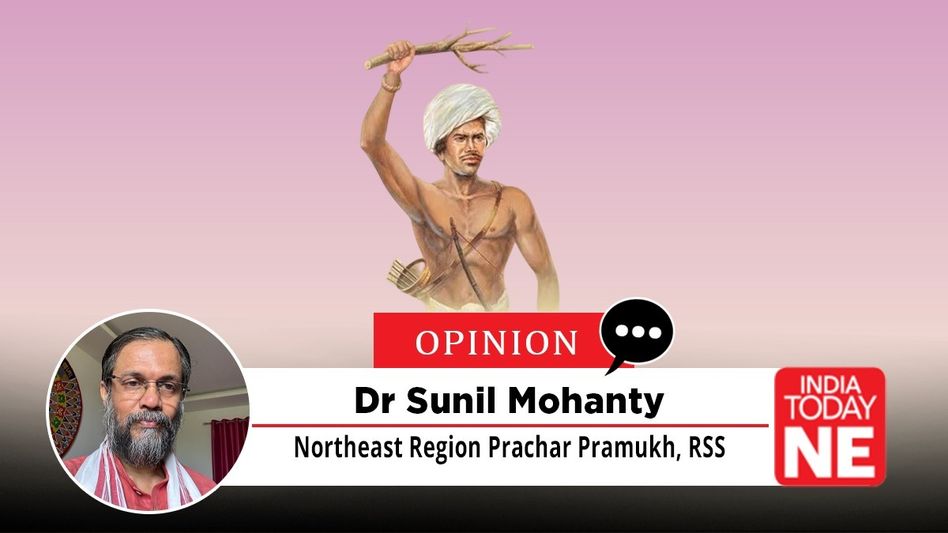Northeast Bharat’s Janajati Pride: A Tribute on Janjatiya Gaurav Diwas
Janajatiya Gaurav Diwas honours the rich traditions and contributions of Northeast Bharat's Janajati communities. The day promotes awareness and respect for their cultural heritage and resilience

On the sacred occasion of Janajatiya Gaurav Diwas, we celebrate not just a day but an entire civilizational heritage, an unbroken story of the tribal indigenous communities of Northeast Bharat whose glory stretches from the age of the Ramayana and Mahabharata to the present. The forests and mountains of the East, mentioned in ancient epics as lands of noble clans, nature-worshipping peoples and brave guardians, continue to echo through today’s Bodo, Karbi, Naga, Mizo, Khasi, Garo, Dimasa, Adi, Apatani, Nyishi, Mishing and Meitei communities. Their ancestors preserved sacred groves, guarded mountain passes, practised herbal medicine, performed rituals for cosmic harmony and upheld codes of honour long before kingdoms were carved or histories written. Their spiritual worldview sees every river as a goddess, every hill as a guardian and every forest as a living realm of divinity. Rituals such as Khasi Shad Suk Mynsiem, Garo Wangala, Karbi Rongker, Mizo Khuangchawi, Adi Solung, Apatani Myoko, Bodo Kherai, Mishing Ali-Aye-Ligang and Meitei Lai Haraoba are not celebrations alone but profound expressions of gratitude, fertility, community ethics and ancestral remembrance, echoes of an indigenous Dharma that has endured unchanged through millennia.
Their scientific and ecological legacy is truly awe-inspiring, reflecting a civilizational intelligence shaped by an intimate relationship with nature. The Apatani terraced wet-rice and paddy–fish farming system, now recognised by UNESCO, stands as one of the world’s most sustainable indigenous models. Equally remarkable are the Khasi and Jaintia living-root bridges, grown from Ficus elastica over decades, masterpieces of bio-architecture created without metal or cement. The Mizo bamboo-drip irrigation, Hmar water-terracing, the rotational jhum cycle of different tribes, the Karbi land-management system, and the Dimasa mastery of hydrology reveal a scientific ethos rooted in practical environmental wisdom. Their architectural brilliance appears in the Mishing chang-ghar stilt houses designed for floods, Mizo bamboo-long houses, and the Naga log-drum acoustic structures that served ritual and community functions. Their deep knowledge of herbal medicine, from Adi healing herbs and Apatani aromatic plants to Karbi medicinal roots, continues to draw global attention from ethnobotanists and researchers.
Beyond these celebrated systems, many lesser-known indigenous achievements further enrich the scientific and cultural landscape of the Northeast. The Angami, Meitei and Mao tribes perfected traditional salt-making technology unique to the Eastern Himalayas, while the Monpa and Sherdukpen communities once led thriving trans-Himalayan trade routes, exchanging horses, salt and wool with Tibet and the plains. Garo communities developed historic trade networks in cotton, iron and betel nut, sustaining regional economies for centuries. Indigenous learning centres such as the Naga Morung and Mizo Zawlbuk functioned as traditional universities imparting law, ethics, martial discipline, ecological intelligence and community leadership. Even their sports reflect this refined heritage: Naga Kene wrestling, Mizo Insuknawr bamboo combat, Khasi archery, and the diverse archery traditions of the Adi, Apatani and Nyishi tribes embody precision, discipline and cultural continuity. Together, these profound yet often overlooked achievements form a radiant layer of Northeast Bharat’s Janajati pride.
Their courage has shaped history. Tai-Ahom warriors of tribal origin built a resilient kingdom that repelled the Mughals seventeen times, with the brilliance of Lachit Borphukan shining forever in our memory. The Angami Naga battle, the spiritual and political leadership of Rani Gaidinliu, the defiant bravery of Tirot Sing Syiem in the Khasi hills, the heroism of Pa Togan Nengminja Sangma of the Garos, Matmur Jamoh of the Adis, Rani Ropuiliani of the Mizos, Sambhudhan Phonglo of the Dimasas and the valour of numerous Bodo and Karbi chiefs form a heroic saga of indigenous pride. They fought not merely to protect territory but to safeguard a sacred worldview, a cultural identity, and the honour of their ancestors.
Culturally, the Northeast’s tribal communities have gifted Bharat some of its most exquisite artistic expressions, the golden radiance of Muga silk, the geometric beauty of Naga shawls, the vibrant textures of Mizo puans, the refined weaving traditions of Karbi and Dimasa women, the thunder of log drums, the haunting music of bamboo flutes and the storytelling dances that carry memories of creation, migration and cosmic order. These traditions continue to flourish, forming a living museum of India’s oldest heritage.
Today, the spirit of these communities shines through icons and countless others in public life, academia, the arts and the armed forces. Their achievements in the modern world are rooted in the same resilience, discipline and cultural pride that shaped their ancestors. In the modern era too, the spirit of the Northeast shines brightly. The sons and daughters of the Scheduled Tribes and other indigenous communities of the Northeast with icons such as Mary Kom, Mirabai Chanu, Lovlina Borgohain, Baichung Bhutia, Dipa Karmakar, Hima Das, Bombayla Devi, Shiva Thapa, Jeremy Lalrinnunga, James Kithan, and countless scholars, soldiers, artists and officers embody the same resilience, discipline and cultural pride that shaped their ancestors. Talimeren Ao (T. Ao), the legendary Naga footballer and captain of independent India’s first national football team in the 1948 Olympics, remains a symbol of pride and inspiration for the tribal communities of the Northeast. From literature to music, from public administration to the armed forces, Janajati sons and daughters of the Northeast illuminate the nation.
Several distinguished tribal personalities from Northeast India have been honoured with the Padma Shri, highlighting their exceptional contributions to society, culture, education, and social work. Among them is Kameshwar Brahma, a Bodo writer and social activist, celebrated for his work in promoting the Bodo language and literature. Dhaneswar Engti, from the Karbi community, received the Padma Shri in 2022 for his tireless efforts to preserve and promote the endangered Karbi language through poetry, songs and writings. From Nagaland, Mayangnokcha Ao, was honoured in 1984 for his contributions to education as the first graduate and a leading teacher in his tribe. Nuchhungi Renthlei, a Mizo poet, singer and teacher, also received the Padma Shri in 1986 for her literary and cultural contributions to the Mizo people. In recent years, Sangkhumi Bualchhuak from Mizoram has been awarded for her social activism and women’s empowerment work, and Jumde Yomgam Gamlin of Arunachal Pradesh has been recognised for her work in de-addiction and community reform. These Padma awardees (the list is more) not only bring pride to their communities but also represent the rich, living heritage of Northeast India’s tribal civilizational legacy.
What makes the Janajatiya heritage of the Northeast truly extraordinary is its unbroken continuity. Through invasions, colonial disruptions and modern challenges, these communities have preserved their languages, rituals, sacred groves, festivals, ecological wisdom and spiritual ethos with remarkable devotion. They stand as guardians of a timeless worldview, teaching Bharat the values of harmony, dignity, courage and reverence for nature.
On this Janajatiya Gaurav Diwas, the tribal traditions of Northeast Bharat remind us that the true strength of our civilisation lies in its diversity, its rootedness and its living spiritual soul. Their legacy is not just a part of our history; it is a shining flame that continues to guide and enrich the nation.
Copyright©2025 Living Media India Limited. For reprint rights: Syndications Today









